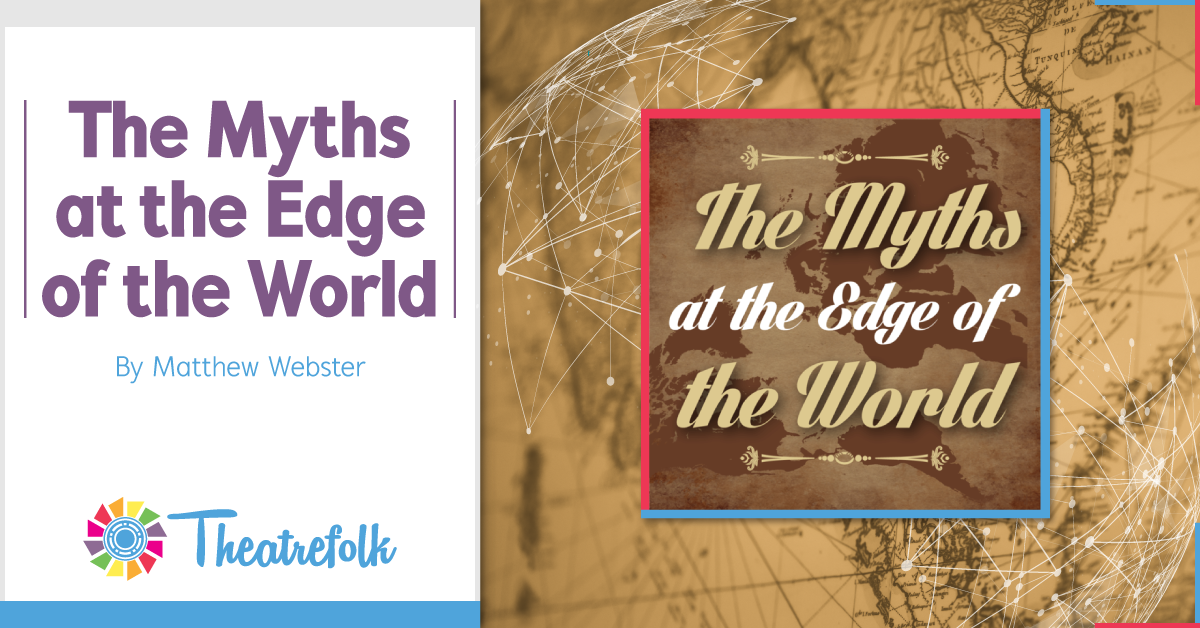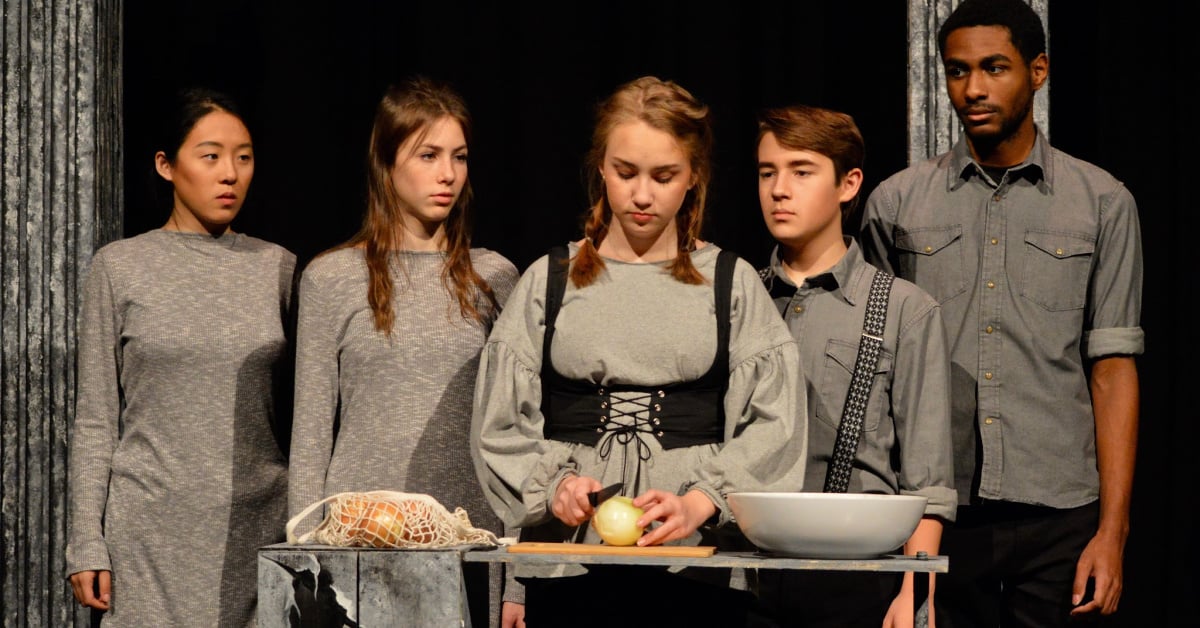Agatha Rex by Lindsay Price is a bold high school take on Antigone - packed with heart, conflict, and a powerhouse ensemble. One girl. One stand. One huge risk. *NEW COMPETITION VERSION AVAILABLE!*

Theatrefolk Featured Play – The Myths at the Edge of the World by Matthew Webster
Welcome to our Featured Play Spotlight. The Myths at the Edge of the World by Matthew Webster is a unique cross-curricular storytelling adventure, with excellent opportunities for mask and movement.
Four campers are not only lost in the wood, they are lost at the edge of the world with no land, water, stars or sun. The only way to bring life back is to ask the right questions that will release stories from the wind. These stories come from all over: China, Africa, Native lore, and the Aztecs. Do you know the Myth of the Water Dragons? Or The Girl who Scattered the Stars? Perhaps you are at the edge of the world too…
Why did we publish this play?
How many times have you used Greek myths in your classroom? But what about the myths of other cultures? What about myths closer to home? One of the things that drew me to The Myths at the Edge of the World was that it incorporated stories that I had never heard of. It is a unique cross-curricular storytelling adventure with fantastic opportunities for mask and movement.
Let’s hear from the author!
1. Why did you write this play?
This play was written as a collaborative project between a Theatre professor, a Dance professor and an Art professor. It was our intention to create a project where all three disciplines could contribute to a performance project. We decided that a theatre production would be the best way to weave these art forms together, and hit upon the idea of creation myths as the source material for the project. I then researched the stories and wrote the script.
2. Describe the theme in one or two sentences.
A group of campers are lost in the woods. As they wonder out loud how everything around them came to be, the world suddenly disappears. With the help of The Wind, they must unlock stories of creation from around the globe in order to rebuild the world, and find their way home.
3. What’s the most important visual for you in this play?
There are a lot of exciting visual possibilities in this play. Each myth presented provides an opportunity to create a unique visual environment, especially when you combine it with the specific cultures presented in the play.
4. If you could give one piece of advice for those producing the play, what would it be?
Look for creative ways of telling these stories. Do not think in terms of realistic design when producing this play. Think instead about clever ways to bring the stories to the stage using shadows, puppets, masks and other kinds of fun theatrical magic.
5. Why is this play great for student performers?
Besides exposing students to mythology from different parts of the world, this play gives students the opportunity to create characters that are non-realistic and bigger than life!


